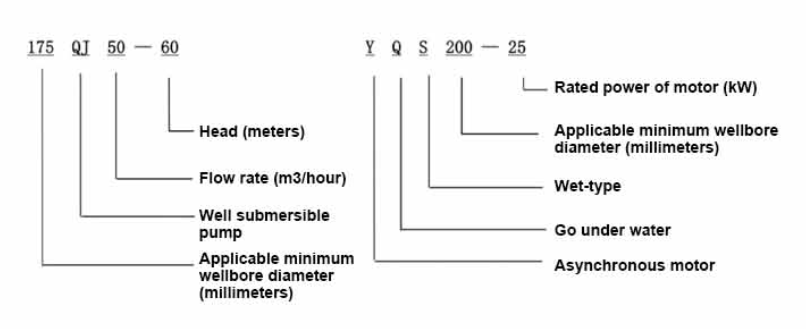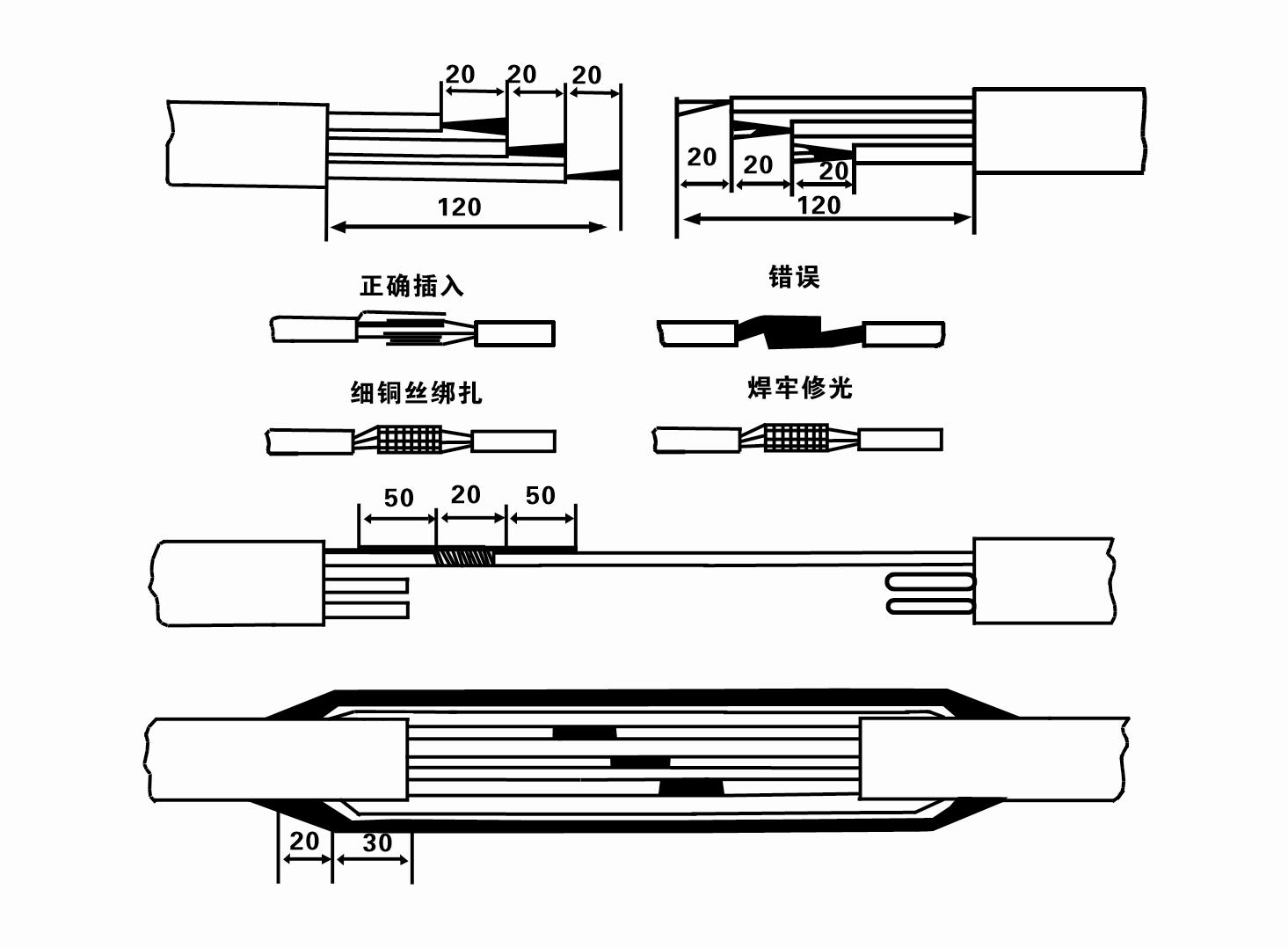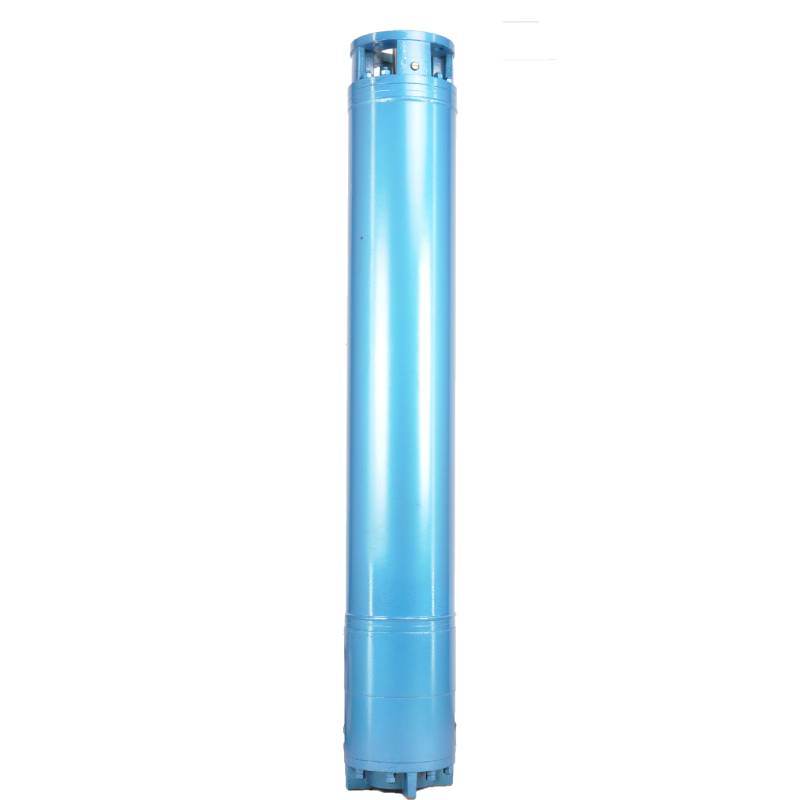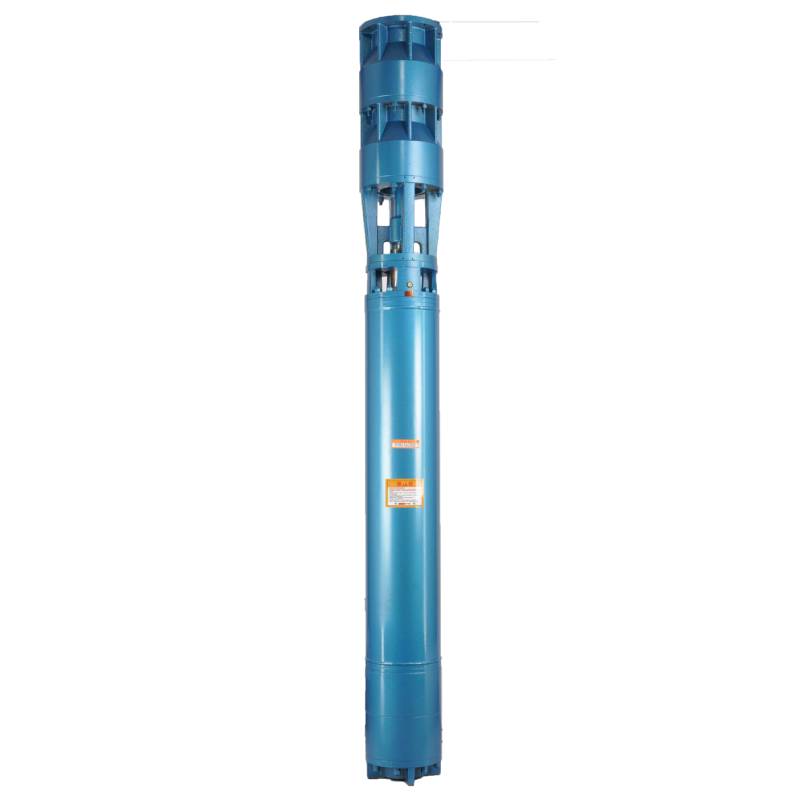This hot water pump adopts the motor made of 50W400 grade high quality cold rolled silicon steel, which is stamped by high speed punch press. It has the advantages of low stator iron loss and low self-heating. The motor winding is designed for hot water pump, high temperature resistance and anti-aging. The winding has water resistance, and adopts 3CR13 stainless steel blade shaft, high temperature resistant bushing and other high quality accessories to enable it to operate for a long time at high temperature, and can be used with frequency converter, so as to automatically adjust according to the amount of water used. This hot water pump is the ideal choice for your hot water equipment, which can operate stably and efficiently, providing you with a lasting hot water supply.
The product is a three-phase AC 380V (tolerance + / - 5%), 50HZ (tolerance + / - 1%) power supply submersible pump. With water quality requirements: water temperature is not higher than 20 °C; solid impurities content (mass ratio) is not more than 0.01%; PH value (pH) is 6.5-8.5; hydrogen sulfide content is not more than 1.5mg/L; chloride ion content is not more than 400mg/L. The electric pump adopts closed or water sealed wet structure, before use must be submersible motor inner cavity filled with clean water to prevent empty, and then tighten the water and air bolts, otherwise not to use. Its work should be completely immersed in water, immersion depth is not more than 70 meters, the distance between the bottom of the pump and the bottom of the well is not less than 3 meters. Well water inflow quantity should be able to meet the electric pump water output and continuous operation, the output water quantity should be controlled at 0.7-1.2 times of the rated flow. The well should be vertical, the electric pump can not be used horizontally or inclined, only vertically placed. The electric pump must be equipped with cables and external overload protection device as required. It is strictly prohibited to conduct no-load test under no water condition.

| Tauira | Rere (m3/h) | Upoko (m) |
Tere hurihuri (hurihia/tohu) |
Puma wai(%) | Putanga diameter (mm) |
E tika ana diameter(mm) |
Whakatauria power(KW) |
Whakatauria ngaohiko(V) |
Whakatauria nāianei(A) |
Te Motika (%) | power factorcosφ | Waeine Rahi Morahi Radial(mm) |
Korero | |||||||||
| 300QJ200-40 | 200 | 40 | 2900 | 76 | 150 | 300runga | 37 | 380 | 77.8 | 85.0 | 0.85 | 281 | ||||||||||
| 300QJ200-60 | 60 | 55 | 115 | 85.5 | 0.85 | |||||||||||||||||
| 300QJ200-80 | 80 | 75 | 154.1 | 86.0 | 0.86 | |||||||||||||||||
| 300QJ200-100 | 100 | 90 | 183.8 | 86.5 | 0.86 | |||||||||||||||||
| 300QJ200-120 | 120 | 100 | 204.3 | 86.5 | 0.86 | |||||||||||||||||
| 300QJ200-140 | 140 | 125 | 249.5 | 87.5 | 0.87 | |||||||||||||||||
| 300QJ200-160 | 160 | 140 | 277.8 | 88.0 | 0.87 | |||||||||||||||||
| 300QJ200-180 | 180 | 160 | 317.5 | 88.0 | 0.87 | |||||||||||||||||
| 300QJ200-200 | 200 | 185 | 367.2 | 88.0 | 0.87 | |||||||||||||||||
| 300QJ200-240 | 240 | 220 | 436.6 | 88.0 | 0.87 | |||||||||||||||||
| 300QJ320-30 | 320 | 30 | 2900 | 77 | 200 | 300runga | 45 | 380 | 94.6 | 85.0 | 0.85 | 281 | ||||||||||
| 300QJ320-60 | 60 | 90 | 183.8 | 86.5 | 0.86 | |||||||||||||||||
| 300QJ320-90 | 90 | 125 | 249.5 | 87.5 | 0.87 | |||||||||||||||||
| 300QJ320-120 | 120 | 160 | 317.5 | 88.0 | 0.87 | |||||||||||||||||
1, well submersible pump for clean water pump, prohibit the new well, pumping sediment and muddy water,
2, well water pump voltage grade of 380/50HZ, the use of other voltage grades of submersible motors need to be customized. The underground cable must use waterproof cable, must be equipped with starting equipment, such as distribution box, start not ready should have commonly used motor comprehensive protection function, such as short circuit overload protection, phase protection, undervoltage protection, grounding protection, idling protection, in case of abnormal conditions, the protection device should be timely action trip.
3, the installation and use of the pump must be reliably grounded, prohibit the push and pull switch when the hands and feet are wet, the installation and maintenance of the pump must be cut off the power supply, the use of the pump place to set up "to prevent electric shock" obvious signs:
4, down the well or before installation, the motor cavity must be filled with distilled water or non-corrosive clean cold boiling water, tighten the / water bolt, the pump on the ground test run, must be to the pump chamber water lubrication rubber bearings, instant start not more than a second, see whether the steering is the same as the steering instructions. When the pump is upright, pay attention to safety, prevent overturning injury.
5, kia rite tonu ki nga tikanga o te ara o te papu, te awhe rere o te whakamahi, ki te aukati i te iti o te rere, te teitei ranei o te kaha o te kumara, te peera me etahi atu waahanga o te kakahu, ka wera te motuka motuka.
6, i muri i te papu ki raro i te puna, te inenga o te nekeneke ki te whenua parenga marara kia kaua e iti iho i te 100M, i muri i te tīmatanga ki te mātakitaki i te ngaohiko me te nāianei, tirohia te nekeneke awhiowhio insulation, ahakoa i roto i te rārangi ki te whakaritenga; papu te pāmahana wāhi rokiroki ki te iti iho i te ira mīti, me whakamaroke te wai i roto i te kōhao motopaika, ārai i te kōhao nekeneke wai tio kino meinga e te pāmahana iti.
The pump part is mainly composed of pump shaft, impeller, shunt shell, rubber bearing, check valve body (optional) and other components. The motor part is mainly composed of base, pressure regulating diaphragm, thrust bearing, thrust plate, lower guide bearing seat, stator, rotor, upper guide bearing seat, sand discharging ring, water inlet section, lead cable and other components. The main characteristic of this product is that the motor is a water-cooled submersible three-phase asynchronous motor, and the motor cavity is filled with water to cool the motor and lubricate the bearing. The pressure regulating diaphragm at the bottom is used to adjust the expansion-contraction pressure difference in the body caused by the change of the temperature rise of the motor. In order to prevent the sand particles in the well water from entering the motor, two oil seals are installed at the upper end of the motor shaft extension, and a sand discharging ring is installed to form a sand discharging structure. In order to prevent the pump shaft from jumping when starting, the pump shaft and the motor shaft are connected together through a coupling, and a thrust bearing is installed at the bottom of the motor. The lubrication of the motor and the pump bearing is realized through water lubrication. The stator winding of the motor is made of high-quality well motor winding wire, with high insulation performance. The pump is designed by computer CAD, with simple structure and good technical performance.

(1) Whakaritenga i mua i te whakaurunga:
1. Tirohia mehemea ka tutuki te papu ruku ki nga tikanga whakamahi me te whanuitanga kua tohua ki te pukapuka.
2. Ma te whakamahi i te obiect taumaha me te diameter e rite ana ki te teitei o te diameter o waho o te papu ruku, ine mehemea ka uru te inneldiameter o te poka wai ki te papu ruku, me te ine mena ka tutuki te hohonutanga o te puna ki nga whakaritenga whakaurunga.
3. Tirohia mehemea he ma te rua o te puna me te wai pokarekare ranei. Kaua rawa e whakamahia he papu hiko ruku ki te horoi i te paru welor papu me te wai kirikiri kia kore e pakaru wawe te papu hiko ruku.
4. Tirohia mehemea he pai te tuunga o te rawhi whakaurunga welhead me te kaha ki te tu ki te kounga o te waahanga katoa.
5. Tirohia mehemea kua oti te whakaurunga o nga waahanga papu ruku me te tika kia rite ki te hoahoa huinga i roto i te pukapuka Tangohia te mata tātari ka huri i te hononga kia kite mena ka huri ngawari.
6. Wewetehia te wiri wai ka whakakiia te kohao motopaika ki te wai ma, kaua e pirau (tohu. me whakakiia ki runga), katahi ka whakakaha i te kopa wai. I muri i nga haora 12 o te werohia o te wai, kaua e iti iho i te 150M Q te parenga whakamarumaru o te motini ka ine ki te tepu wiri 500V.
7. Cable joint, cut off a 120mm rubber sleeve from one end of the outgoing cable and the matching cable with an electrician's knifethen stagger the length of the three core wires in a stepped shape, peel off a 20mm copper core, scrape of the oxide layer on theoutside of the copper wire with a knife or sand cloth, and insert the two connected wire ends in palirs.After tying the layer tightly with fine copper wire, solder it thoroughly and firmly, and sand of any. burrs on the surface. Then, forthe three joints, use polyvester insulation tape to wrap them in a semi stacked manner for three lavers. Wrap the two ends of thewrapping layer tightywith nyion thread,and then use a semi stacked method to wrap the tape for three layers. Wrap the outellayer with high-pressure insulation tape for three layers. Finally, fold the threestrands together and repeatedly wrap them for fivelayers with high-pressure tape. Each layer must be tightly tied, and the interlayer joints must be tight and fimm to prevent water frompenetrating and damaging the insulation, After wrapping, soak in water at room temperature of 20 ’c for 12 hours, and measurethe insulation resistance with a shaking table, which should not be less than 100M Ω
Ko te hoahoa tukanga waea waea kua honoa e whai ake nei:
8. Whakamahi i te mita maha ki te tirotiro mena kei te hono nga waea-waa-toru me te ahua taurite te parenga DC.
9. Tirohia mehemea kua taumaha te ara iahiko me te kaha o te hurihanga, katahi ka hono atu i te pana whakamaru i te taumaha, i nga taputapu tiimata ranei. Tirohia te Ripanga 2 mo nga tauira motuhake, katahi ka ringihia he peere wai ki roto i te papu wai mai i te putanga papu wai hei whakahinuhinu i nga rapa rapa i roto i te papu, katahi ka tuu te papu hiko ruku ki runga kia mau. ka tirohia mehemea e rite ana te ahunga urungi ki te tohu urungi. Ki te kore, whakawhitia nga hononga e rua o te taura e toru-waahanga. Katahi ka whakauruhia te tātari ka takatu ki te heke ki raro i te puna. Mena ka whakamahia i roto i nga waahi motuhake (penei i nga awaawa, i nga awaawa, i nga awa, i nga harotoroto, i nga harotoroto, me etahi atu), me tika te turanga o te papu hiko.
(2) Nga taputapu me nga taputapu whakauru:
1. Kotahi te rua o nga mekameka hiki mo te neke atu i te rua tana.
2. He tripod me te teitei poutū kaua e iti iho i te wha mita.
3. E rua nga taura iri (wire ropes) ka taea te kawe i te taumaha neke atu i te kotahi tana (ka taea te kawe i te taumaha o te huinga katoa o nga papu wai).
4. Tāutahia kia rua ngā rawhi (splints).
5. Nga wrenches, hama, wiriwiri, taputapu hiko me nga taputapu, aha atu.
(3)Tautanga papu hiko:
1. Ko te hoahoa whakaurunga o te papu hiko ruku e whakaatuhia ana i te Whakaaturanga 2. Ko nga rahinga whakaurunga motuhake e whakaatuhia ana i te Ripanga 3 "Rarangi o nga Rarangi Whakamutunga o te Pump Hiko Rakau".
2. Ko nga papu hiko ruku me te upoko iti iho i te 30 mita ka taea te whakairi tika ki roto i te puna ma te whakamahi i nga ngongo me nga taura waea, etahi atu taura hemp ranei ka taea te kawe i te taumaha katoa o te miihini, nga paipa wai, me te wai i roto i nga paipa.
3. Ko nga papu me te upoko neke atu i te 30 mita te whakamahi paipa maitai, a ko te raupapa whakaurunga e whai ake nei:
①Whakamahia he rawhi hei rawhi i te pito o runga o te wahanga papu wai (kua honoa te motini me te papu wai i tenei wa), hikitia me te mekameka iri, ka ata herea ki roto i te puna tae noa ki te kuhua te rawhi ki te upoko o te puna ka tango mekameka iri.
② Whakamahia etahi atu rawhi hei rawhi i te paipa, hikitia me te mekameka iri kia 15 cm te tawhiti atu i te flange, ka ata whakaheke. I waenganui i te flange paipa me te flange papu Whakanohoia te papa rapa ki te waahi ka whakakoia te paipa me te papu kia rite ki nga tutaki, nati me nga horoi puna.
③ Whakaarahia te papu ruuma kia paku, tangohia te rawhi i te pito o runga o te papu wai, herea te taura ki te paipa wai me te riipene kirihou, ka ata herea ki raro kia tuu te rawhi ki te upoko puna.
④Whakamahia taua tikanga ki te here i nga paipa wai katoa ki roto i te puna.
⑤I muri i te hono o te taura arataki ki te pana whakahaere, ka hono atu ki te hiko hiko e toru nga wahanga.
(4) Nga mea hei tohu i te wa o te whakaurunga:
1. Mēnā ka kitea he āhuatanga tāmii i te wā e mahi ana te kumara, huri, kumea ranei te paipa wai kia pai ai te taunga. Ki te kore tonu e mahi nga momo mahi, tena koaKaua e tohe te papu ki raro kia kore ai e pakaru te papu hiko ruku me te puna.
2. I te wa o te whakaurunga, me whakanoho he papa rapa ki te taha o ia paipa me te whakakaha kia rite.
3. Ka tukuna te papu wai ki roto i te puna, me tuu ki waenganui o te paipa puna kia kore ai e rere te papu ki te pakitara o te puna mo te wa roa, ka wiri te papu, ka tahia, ka wera te motini. .
4. Whakatauhia te hohonutanga o te papu wai ki raro o te puna i runga i te rere o te onepu me te parapara o te puna. Kaua e tanu te papu ki te paru. Ko te tawhiti mai i te papu wai ki raro o te puna ko te tikanga kaua e iti iho i te 3 mita (tirohia te Whakaahua 2).
5. Ko te hohonutanga o te urunga wai o te papu wai kia kaua e iti iho i te 1-1.5 mita mai i te taumata wai hihiri ki te kohanga uru wai (tirohia te Whakaahua 2). Ki te kore, ka ngawari te pakaru o nga papa papu wai.
6. Ko te hiki o te papu wai e kore e iti rawa. Ki te kore, me whakauru he paera kuaha ki runga i te paipa wai o te upoko o te puna ki te whakahaere i te rere o te papu ki te waahi rere reiti kia kore ai te motini e nui te utaina me te wera na te nui o te rere.
7. I te wa e rere ana te papu wai, me noho tonu te whakaputanga wai me te ara, kia mau tonu te naianei (i raro i nga tikanga mahi kua whakatauhia, ko te tikanga kaua e neke atu i te 10% o te waa kua tohua), kaore he wiri, he haruru ranei. Mena he mate kino, me whakamutu te miihini kia kitea te take me te whakakore.
8. I te wa e whakauru ana, whakarongo ki te whakatakotoranga o te waea motika motika (tirohia te Whakaahua 2). Ina he paipa rino te paipa wai, arahina mai i te rawhi o te upoko puna; ina he paipa kirihou te paipa wai, arahina mai i te tohu whenua o te papu hiko.
After installation of the underwater pump, it is necessary to recheck the insulation resistance and three-phase continuity of the switch, and check whether the connection between the instrument and the starting equipment is wrong. If there is no problem, you can start the test machine. After starting, observe whether the indication reading of each instrument is correct. If the rated voltage and current specified on the nameplate are exceeded, observe whether the pump has any noise or vibration. If everything is normal, it can be put into operation. Four hours after the first operation of the pump, it should be turned off and the thermal insulation resistance of the motor should be quickly tested, and its value should not be less than 0.5 megaohm. After stopping the pump, it should be restarted after an interval of five minutes to prevent the water column in the pipeline from completely reversing, resulting in the motor burning due to excessive current. After the pump is put into normal operation, in order to prolong its service life, it is necessary to check regularly whether the supply voltage, working current and insulation resistance are normal. If the following conditions are found, the machine should be stopped immediately to eliminate the fault:
1 the current exceeds 20% under the rated working condition.
2 the dynamic water level drops to the inlet section, resulting in intermittent drainage.
3 the underwater pump vibrates violently or emits huge noise.
4 the supply voltage is lower than 340 volts.
5 a fuse is burned.
6 the water pipe is damaged.
7 the thermal insulation resistance of the motor to the ground is less than 0.5 megaohm.
When disassembling the device, it is necessary to untie the cable bundle and remove the pipeline part and the line protection plate. Remove the drain bolt and exclude all water in the motor chamber. Remove the filter element and loosen the screw on the coupling fixed to the motor shaft. Unscrew the bolt connecting the water inlet section and the motor, and separate the pump and the motor (pay attention to placing the device horizontally when separating to prevent the bending of the pump shaft). The sequence of disassembling the pump is as follows: (see Figure 1) water inlet section, impeller, water inlet shell, impeller. Check the valve body, and use a special tool to loosen the cone sleeve fixed to the impeller when removing the impeller. In the process of disassembly, avoid bending the pump shaft and damaging various components. The disassembly process of the motor is as follows: (see Figure 1) put the motor on the platform, and remove the nuts on the screw (pull rod bolt), base, shaft head lock nut, thrust plate, key and lower guide rail - bearing seat, bolt, and then remove the rotor (be careful not to damage the wiring harness), and finally remove the connecting parts and upper guide bearing seat. Unit assembly: before assembly, the rust and dirt of each component should be cleaned, and the sealant should be coated on each mating surface and fastener, and then assembled in the opposite order of disassembly (the movement of the motor shaft after assembly is about one millimeter), after the assembly is completed, the coupling should be flexibly rotated, and then the filter element should be placed for testing. Each time the underwater electric pump has been used for one year, or less than one year but has been immersed for two years, it must be disassembled and inspected in accordance with Article 5 and replace the worn parts.
1, whakawetohia te wai ki roto i te kohao motopaika (ina koa i te takurua kia kore ai te motini e makariri), kia pai te here i te taura.
2, store in an indoor room without corrosive substances and gases, with a temperature below 40 °C.
3, me aro te whakamahi mo te wa roa ki te aukati waikura o nga papu totohu.
- Kaipupuri
- Karekau kakau
- Karekau rakau rapa
-
mowhiti hiri
01 Te urunga wai hohonu
02 Te tuku wai teitei
03 wai maunga
04 wai pourewa
05 Te whakamakuku ahuwhenua
06 te whakamakuku maara
07 te urunga wai o te awa
08 wai whare










